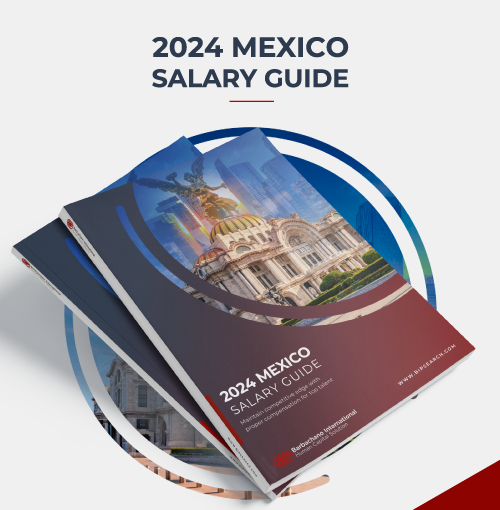
2023 is almost upon us, and many are predicting it will bring a significant economic recession. Despite the gloomy forecast, however, 2023 is still shaping up to be a candidate-driven market, where applicants have the upper-hand and can negotiate for better pay and perks because companies have to compete for top-tier talent. If you’ll be among the organizations looking to attract some of this sought-after talent in 2023, you should familiarize yourself with what the hiring market will look like in the coming year.
- The Skills Shortage Will Continue
The COVID pandemic and the Great Resignation spurred a worldwide talent shortage, a scenario in which the skills employers need and the number of employees or candidates with those skills don’t match up. In 2022, nearly 70% of surveyed employers said they didn’t receive enough applicants for open positions, and a similar number said the applicants they did interview were not suitably qualified. Eighty-percent of those same respondents also said that they expect the talent shortage to continue into the upcoming year (Human Resources Online).
- Skills Will Trump Experience
Because of the aforementioned talent shortage, demonstrable skills will likely top employers’ requirement lists moving forward. In the past, hiring officials tended to prioritize experience, as they believed experience and skill were highly correlated. However, as Harvard professor of Organizational Behavior Myra White opines, “Organizations are filled with people with expertise and years of experience who do an adequate job but not a brilliant one” (Management Issues). With top talent at an all-time premium, organizations are much more likely to focus on results than years “in office.”
- Sourcing Across Borders Will Become the Norm
Perhaps also as a result of the skills shortage, location has lost its edge as a criterion for employment. In fact, in a Conference Board study, at least 33% of over 330 US HR executives said they would hire remote workers from anywhere in the US, Mexico or internationally. Pre-COVID, only 12% of these same decision-makers said they would do so. These days, it seems, you have to take talent where you can get it.
- Remote Work Will Gain an Even Stronger Foothold
As a direct consequence of #3, remote and/or hybrid jobs will gain an even stronger foothold. Because companies need to spread their net farther afield to find talent, candidates are now often empowered to negotiate a fully-remote or a hybrid work model. According to a recent projection, 25% of all professional jobs in North America will be remote by the end of 2022, and that percentage will increase through 2023.
- Project-Based Work Will Explode
In a similar vein, project-based and freelance work are likely to gain momentum. The world’s workforce is changing radically and rapidly. With the new work-from-home mentality, people are eschewing the office-based positions that have been the staple for decades, resulting in a natural growth in contract and freelance work relationships and a gig economy (Financial Post). Even C-Suite positions are being contracted out in rising numbers, with many benefits for both employers and employees.
- Engagement Will Be Even More Crucial
With so many people working fully or partly from home, keeping employees engaged can be harder, but it’s even more important. “In 2023,” says content marketing professional Matthew Bushery, “a strong company culture will be less about making the office a fun environment and more about ensuring employees, regardless of location [emphasis added], feel seen and heard […] understand the value of their work […] and are set up to succeed in their respective roles” (Lever).
- Branding Will Be Key
If you want your candidates to know that their well-being and future engagement are a topmost priority, company branding will be more crucial than ever. In this candidate-driven market, you must position yourself as an organization that cares about its people in order to recruit top talent. Name recognition and reputation will go a long way with job seekers.
8. Diversity Initiatives Will Grow
The notion that a diverse workforce drives innovation, ingenuity, and productivity is now a proven fact. Diversity metrics like candidate gender, ethnicity, age, neurodiversity, etc. will be tracked with increasing frequency in 2023. To invest more in diversity and inclusion (DI) initiatives, organizations will have to implement advanced evaluation tools designed to eliminate recruiting and hiring biases (Recruiter Flow).
9. Internal Mobility Will Rise
According to a 2021 Career Mobility Outlook survey, 90% of HR executives said one out of 10 of their open positions could be filled internally. It seems organizations are coming to the realization that, in a highly-competitive job market, hiring qualified candidates is becoming increasingly difficult, and they need to focus on internal training, development, retention, and promotion. Not only will such policies keep your talent in-house, but they will bolster your reputation and give top-notch candidates one more good reason to join your team.

By Fernando Ortiz-Barbachano
President & CEO of Barbachano International (BIP)
Barbachano International is the premier executive search and leadership advisory firm in the Americas (USA, Mexico, Canada, and Latin America) with a focus on diversity and multicultural target markets. Outplacement and Exe

